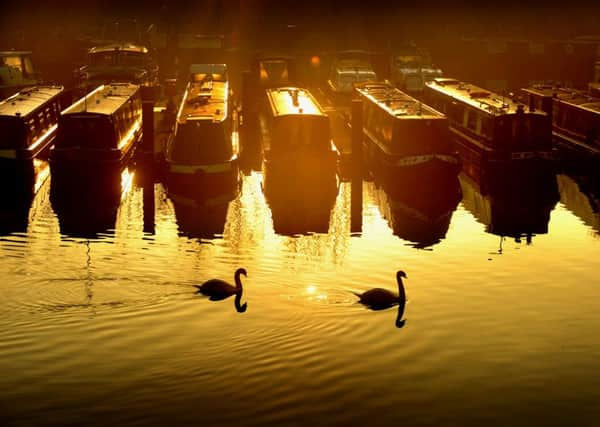Reflections on tranquil Leeds waterway's golden age


As the sun sets on a winter’s afternoon swans glide past the barges at Lemonroyd Lock at Woodlesford in Leeds, but a month ago it was a very different story as the city’s waterways witnessed the highest water levels in years.
Since the Boxing Day floods, experts from the Canal and River Trust have been out in force to assess the damage done and to determine what, if anything, can be done to prevent a repeat of the disaster. Plans are already being drawn up to dredge the affected areas and it is hoped that when the whole 34 mile stretch of the waterway is reopened, the winter floods can be consigned to just another chapter in its long history.
Advertisement
Hide AdAdvertisement
Hide AdThe origins of the Aire and Calder Navigation date back to 1704 when the Aire was made navigable to Leeds and the Calder to Wakefield, by the construction of 16 locks.
It proved to be a lifeline for Yorkshire’s industrial heartlands and a century later the waterway was thronged with steam tugs. And that was just the start. In the 1860s, those tugs were joined by boats which would soon become known as Tom Puddings.
Named after canal engineer Thomas Telford and their resemblance to a string of black puddings, the boats transported coal to the textile factories, forges and foundries which had by then transformed Yorkshire’s skyline.
At its peak, the canal carried more than 1.5m tons of coal per year.
Advertisement
Hide AdAdvertisement
Hide AdAs the 1800s gave way to the 20th century, the Navigation continued to be an important part of the county’s transport network. However, with the arrival of motorways and a decline in coal use, change was inevitable. In 1986 – two years after the start of the bitter miners’ strike – the last coal boats sailed down the Navigation.
However, while much of the upper reaches are now designated leisure routes, it still enjoys significant commercial traffic, although most of the traffic is now petroleum and gravel, rather than the coal which kept the navigation profitable for 150 years.
Tech details: Nikon D3s, 12-24mm lens, exposure 1/250th sec at f5.6 and ISO 200.
Picture: Simon Hulme